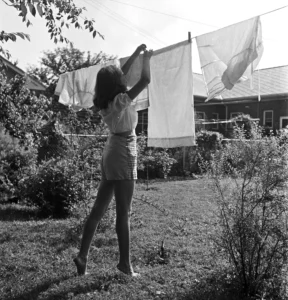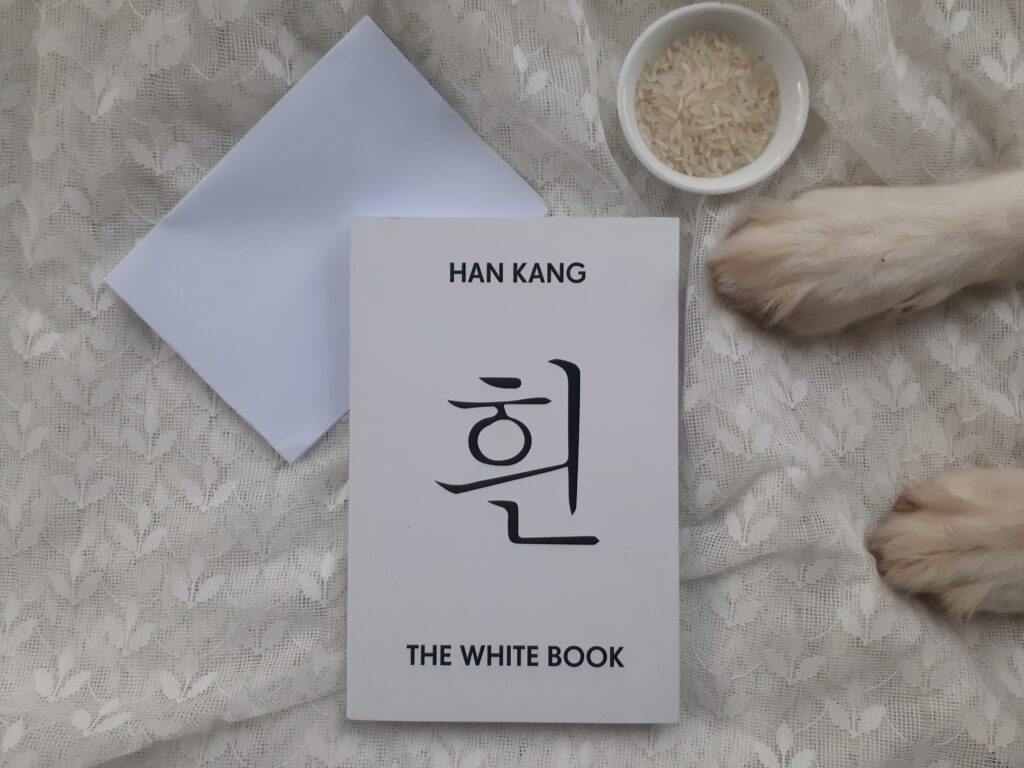'Girl': Kincaid's Experience Conveyed Through Language
by
Megan Lee

Kincaid’s “Girl” consists of a single line and ostensibly depicts a conversation between a mother and her daughter, with each piece of advice and command fragmented by punctuation. Through the mother’s urgent and commanding tone, Kincaid is able to convey a strong sense of her character’s struggles, seeing her lack of voice and authority against her mother. In doing so, she vividly denotes the apparent dangers of female sexuality and highlights the myriad of expectations on women in society. Most strikingly, the ambiguity surrounding the identity of the speaker serves not only to universalise such experiences but also to illustrate the frustrating complexities when navigating social worlds as a woman.
Kincaid establishes a distinct power imbalance between mother and child, echoing society’s emphasis on domesticity and the myriad of expectations on women. The mother seemingly takes on a domineering role, demanding her child to “wash the white clothes on a Monday”, “(to) cook pumpkin fritters in very hot sweet oil.” and “(to) soak your little cloths.” The mother’s use of asyndetic listing coupled with her repeated use of imperatives suggests her instructions are exhaustive, presaging the fact that her daughter’s life will be defined by strict regimentation. Moreover, her choice to underscore ideas regarding domesticity, such as instructing her daughter on “how to sew on a button” as well as how to “soak saltfish overnight before you cook it.”, hints at the traditional belief that a woman must empower her household to be deemed respectable. Additionally, Kincaid’s choice to utilize a single run-on sentence serves to powerfully reinforce the same message that women must adhere to expected gender roles. Whilst the mother’s stern commanding speech creates a sense of claustrophobia throughout the text, her choice of critical language presents juxtaposing scenarios of what is regarded as acceptable and disgraceful. The use of antithesis all throughout her declarative statements such as “this is how you smile to someone you don’t like very much” and “this is how you smile to someone you like completely”, presents a narrow-minded and traditional view of femininity. However, the most striking aspect of this prose-poem is the fact that the child whom every admonition is directed to is almost entirely absent. The child’s only retaliation to her mother’s accusations are her attempts at establishing herself as one that follows the rules of propriety, stating that she does not “sing benna on Sundays at all and never in Sunday school.” The child’s use of tautology illustrates her desperation to defend herself, evoking pathos for not only her character but the women who are chastised for defying societal expectations. Thus, the absence of the eponymous girl parallels the many instances women are silenced in order to conform to societal expectations. More importantly, the mother’s assertion of what is right and wrong highlights Kincaid’s exploration of domesticity and serves to convey a strong sense of her character’s struggles.
Furthermore, Kincaid vividly denotes the apparent dangers of female sexuality and promiscuity. All throughout the text, the mother’s instructions are shrouded with warnings and accusations. The mother provides a stark contrast between two modes of being a woman, demanding her to “walk like a lady and not like a slut you are so bent on becoming.” suggesting that sexuality must be carefully guarded and even concealed to maintain a respectable front. The mother refers to her child as the “slut I have warned you against becoming”. The repetition of the derogatory term “slut” alludes to society’s disapproving view of female sexuality whilst the mother’s emphasis on the act of her daughter “becoming” a promiscuous figure in society highlights the undertones of misogyny all throughout the text. In addition, the mother links innumerable everyday items and tasks to the notion of sexuality, such as how one must “squeeze bread to make sure it’s fresh.” The girl’s question as to what she should do if “the baker won’t let me feel the bread?” brings about a rebuke from the mother, who believes that her daughter has confirmed her promiscuity, illustrating the objectification of women in society. Seeing that the bread acts as a symbol to parallel the girl’s purity, the mother implies that the girl will lose social value once she is deemed unrespectable, just as bread loses value when it is no longer fresh. Yet, the most striking line of the text is the mother’s direct address to the daughter through the declarative “you are not a boy”, as it serves to depict the clear divide between the two genders and the vast differences in expectations. Whilst it is socially acceptable for a male counterpart to “squat down to play marbles”, girls are seemingly expected to live their lives based on “how to love a man”. The mother hints at the significance of female submission in society, demonstrating the price women must pay for acceptance. Kincaid therefore reveals much about the apparent risks of showcasing one’s femininity and sexuality in public, furthering the text’s exploration of gender and authenticity.
Most importantly, the ambiguity surrounding the identity of the speaker universalises such experiences of objectification and illustrates the frustrating limitations imposed on young girls. The title of the piece is the vague common noun “girl”, yet readers are not offered the merest sense of who this girl may be. The subjectivity of the character’s identity makes it difficult to form opinions of the character outside the pattern of rules and expectations that act as molds to shape her. At times, the girl becomes present, and her interjections where she proclaims her innocence against accusations of her “sing(ing) benna in Sunday school” suggests the text’s exploration of the conflict between freedom and expectation. Though readers are unaware of the speaker’s true identity, Kincaid focuses not merely on the characterization of the narrator as a vulnerable female, but subtly hints at social roles that act as limitations as well. The girl is asked to not “speak to wharf-rat boys, not even to give directions”. The referral to such boys as “wharf-rat(s)” and the subsequent command to not speak to them, even in regards to something as simple as directions, implies they are unworthy of acknowledgement. This underscores how poverty poses threats to the stability of one’s life as well as how they are viewed by others in their community. It is clear that Kincaid establishes society’s emphasis on materialism, seeing that the girl is asked to prepare for any “important guest(s)”. The exploration of both class and gender are vital to the impression gained of the girl in the text, seeing that she is shaped by her mother’s imperative commands and expectations to not do anything outside societal norms. Yet, whilst Kincaid seemingly demonstrates a conversation between mother and child, it can perhaps be interpreted that the narrator contains both voices. The anxious and almost urgent tone of the writing, coupled with the text’s form as a stream of consciousness, seems to indicate that this is a reenactment of what the young girl has been told before. Thus, it seems that the unidentifiable narrator and the lack of context in such a fragmented story serves to underscore Kincaid’s exploration of a woman’s role in a materialistic and capitalist society.
Ultimately, Kincaid uses a myriad of ways to convey an evocative sense of the young girl’s struggles in navigating social worlds as a female. What is perhaps most striking about her writing is how it reads almost like an exhaustive declaration of the damning expectations imposed on young females, of the complex relationships between each generation, and of the many obstacles a woman must overcome to be respected.












